bigdaddylee82 wrote: Naturally aspirated Volvo 850s have a diverter valve (flapper) built into the bottom of their air filter box, it's controlled with a spring loaded thermostat, not vacuum. The flapper allows air to enter the air filter box from either a shroud on the exhaust manifold (hot air) or from the snorkel between the headlight and radiator (fresh air). It's common for the thermostat/spring to fail and only allow air from the hot side. It's supposedly intended to prevent throttle body icing in cold climates, not really for fuel economy, though it may provide a parts/brain storming source for further tinkering. - Lee
Response times on a vacuum operated one would be nearly instantaneous, not sure how you'd use the thermostatically controlled one? (he stated "Realistically I need all the power I can get if the situation demands it.")

In reply to Autolex:
"It may provide a parts/brain storming source for further tinkering" I agree, thermostat wouldn't be the answer for the situation, though it is instant when the spring releases, another way to control the flapper valve would be easy to come up with; vacuum actuator, choke cable, linear actuator, etc. I was simply stating, maybe not clearly enough, that an OEM air cleaner box that exists that may provide some insight, or even parts for future experiments with hot/cold intake air switching.
I'm really curious to see how the hot air effects the MPG with the Megasquirt. I did an experiment on my Saturn last year and relocated the intake air temperature sensor to measure air temperature right at the throttle body and snorkeled hot air off the exhaust manifold. The car looses enough power to be noticeable, however I did see a jump in MPG. As I recall the temp was in the 140F range according to the Scangauge.
Over at the Saturn camp they tell stories of folks doing the same thing plus insulating the intake track and getting around 200f at the throttle body. The Saturn ECU can handle this and keeps the engine from spark knocking, however Megasquirt II doesn't have provisions for knock sensors so this may get tricky.
This is an experiment that can be easily do on the car but the dyno will help identify the limits and most likely pinpoint the sweet spot in less than a day.
With GRM brainstorming the diverter system should be fairly easy to build. I'm liking the idea of using vacuum to switch over on heavy loads/acceleration.
Thanks for the input!
2002maniac wrote: Great job with this project! I see a thread in the future titled "Fujioko builds a wind tunnel"
LoL.... Well now that you mentioned it...
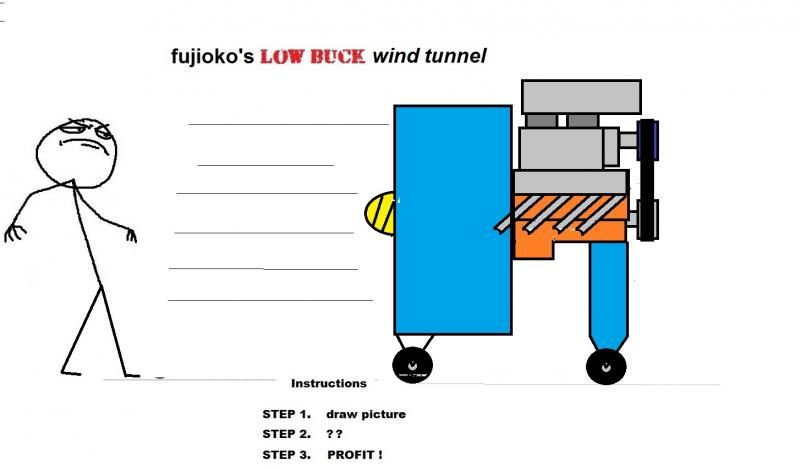
I wonder if getting a hardtop would help, Ive always been told convertible tops are not very aerodynamic, just because of the material and how they can move around at speed. Id be curious to see what kind of differences it made if any on something like this.
I really want to see this thing get over 50 mpg.
Wouldn't a fiberglass fastback be even better than? I just check one price from one company... $2200. You'll never get a return on that investment.
fujioko wrote: I'm really curious to see how the hot air effects the MPG with the Megasquirt.
My research indicates that you should see ~2.5% swing in fuel for every 10 degrees (C) of air temperature change. As the air gets hotter (and less dense), you need less fuel.
Normally the B3 project is in a constant state of evolving and it is rare when the project doesn't make any advances. Getting results, both good or bad is my passion and I don't like to put the project on the back burner. Unfortunately a mandatory home improvement project has absorbed 100% of my free time and the B3 project has been sidelined for a few weeks. The good news is I just finished all the heavy lifting on the house project and now I'm into the trim and detail work. Both the B3 and the dyno project should be getting regular updates again.
Anyway , within the next few weeks, Michigan will be switching over to winter blend of gasoline and all my unfinished experiments will more or less be inconclusive. I really hate winter gas.
So... I was poking around at the Festiva camp and saw a thread on hot air intake. The OP had a pretty cool idea about using a water cooled intercooler and plumbing it into the heater lines and pumping hot coolant through it. I'm thinking this is something I will try. The only down fall is it may suck too much heat from the heater circuit and there wont be any cabin heat. While I don't drive the Miata in the snow, I do drive it until the first snow and I do enjoy the heater. Another thought is these water-cooled intercoolers are not rated for coolant pressure and could burst?
Anyway it looks like I can get one of these liquid cooled intercoolers on ebay for about $80.00. IDK.. It seems like it should work but it is most likely Chinese crap and quality is probably questionable.
I think I'll take a chance and order one tomorrow..
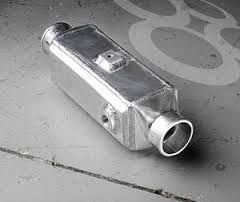 This is sort of what I'm thinking about using to get the intake air up to a higher and more stable temperature.
This is sort of what I'm thinking about using to get the intake air up to a higher and more stable temperature.
In reply to Opti and Ross
Last summer I pulled the trigger and fitted a hardtop to the Miata. I admittedly installed the hardtop for ride comfort than MPG's but in the end I didn't see any improvement. I'm somewhat baffled by the outcome and perhaps I'll see results when I get the engine tune sorted out.
The fiberglass fastback is a budget buster right now, but it certainly looks cool. I'll need to win the lotto for that one.
Stay tuned!
You could experiment with some foam insulation and duct tape, mock up a rough shape and see if it impacts the fuel economy. If it does, and is a big enough bump, you could glass it in and fit at lexan window.
I pulled the trigger and ordered up an el-cheapo liquid intercooler for some pre-winter experiments. I'll eventually installed the intercooler on the dyno engine, but for now let's see what happens in the real world.
The idea is to pass hot coolant through the intercooler to pre-heat the intake air. This is bassakwards for performance but seems to be something to try for better MPG. Theoretically I could have build an airbox around the exhaust manifold and snorkeled hot air but this liquid intercooler is actually easier to install.
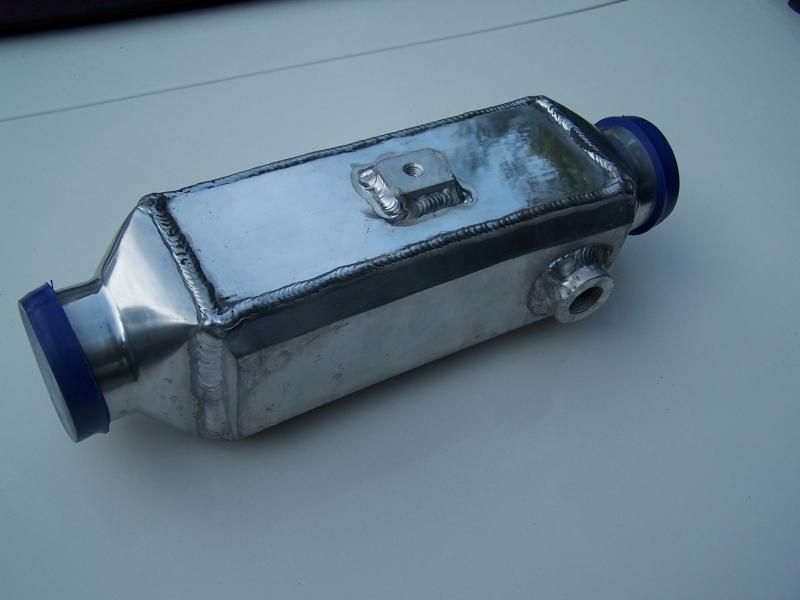 El-Cheapo intercooler arrives at the fujioko proving grounds.
El-Cheapo intercooler arrives at the fujioko proving grounds.
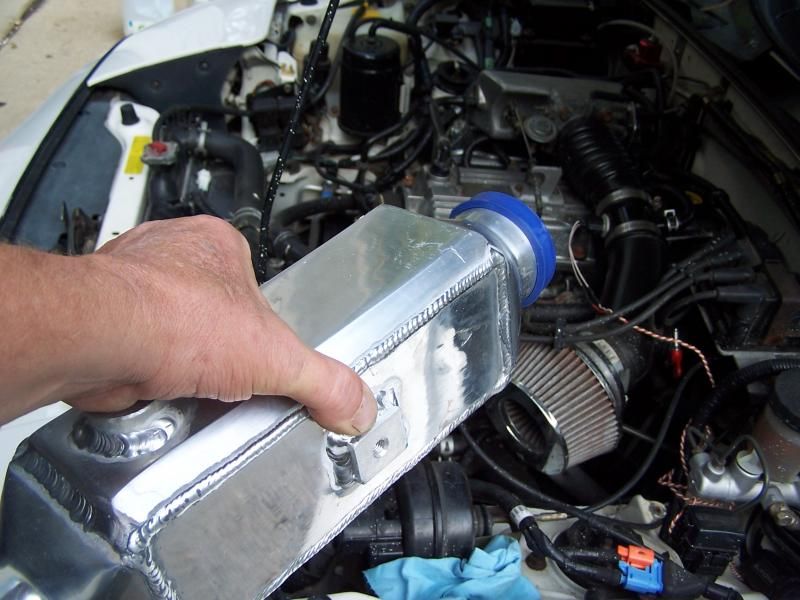 Looks like it needs to go right about here.....
Looks like it needs to go right about here.....
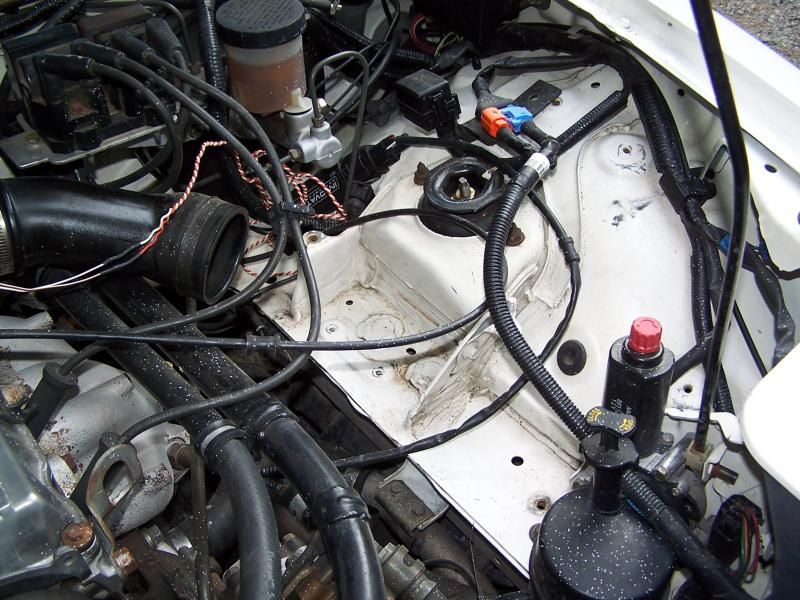 The cruise control servo was pitched overboard to make room for this experiment.
The cruise control servo was pitched overboard to make room for this experiment.
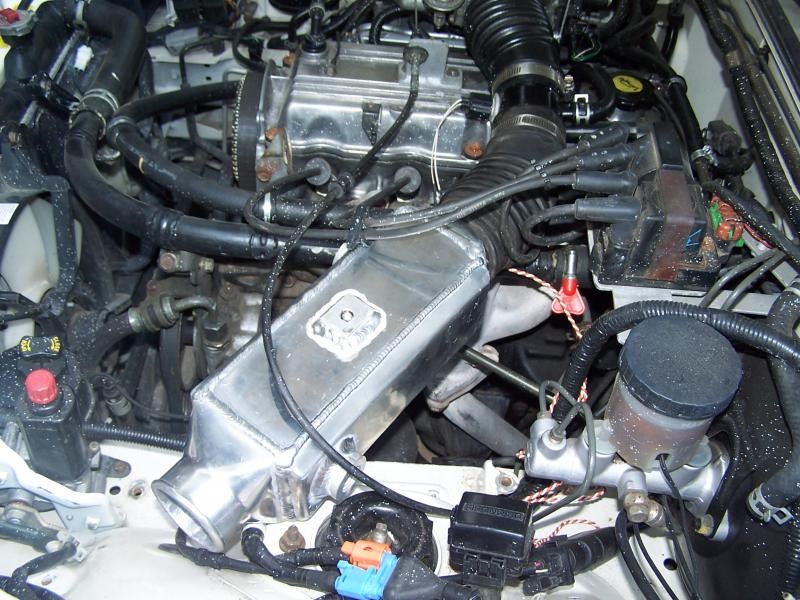 Sort of fits, but no room for an air filter. um... that sucks.
Sort of fits, but no room for an air filter. um... that sucks.
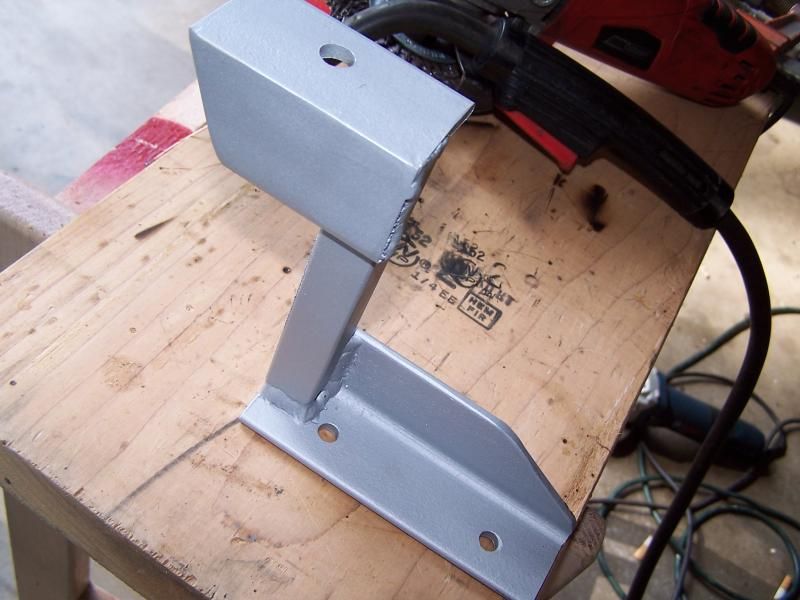 A bracket was welded up to support the intercooler.
A bracket was welded up to support the intercooler.
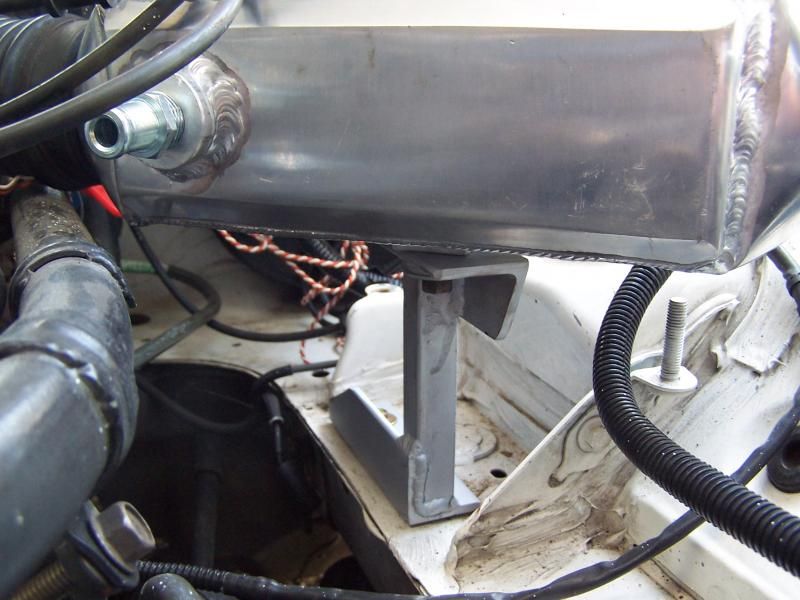 Bracket fits like a glove.
Bracket fits like a glove.
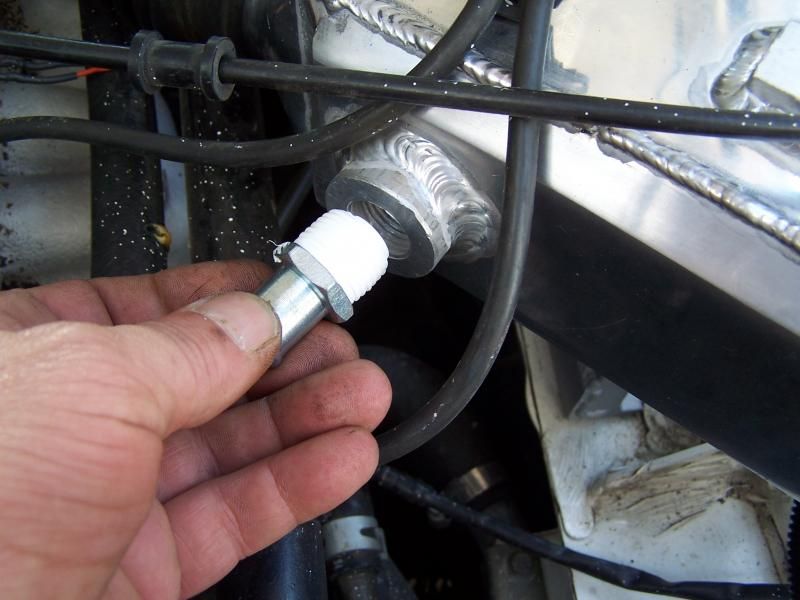 Some fittings were added ....
Some fittings were added ....
 This coolant hose was $27.00, but it fits a 1994 Mazda Miata with a Festiva B3 engine with a hot air intercooler perfectly
This coolant hose was $27.00, but it fits a 1994 Mazda Miata with a Festiva B3 engine with a hot air intercooler perfectly![]()
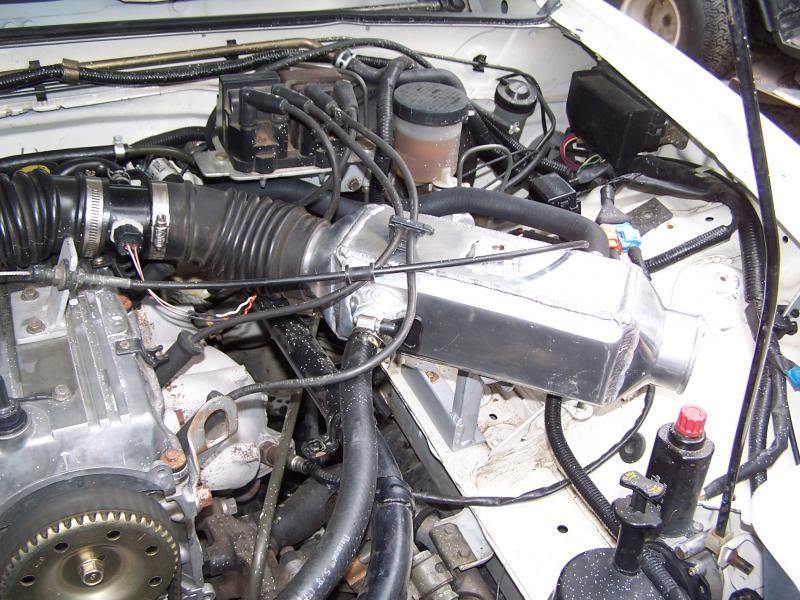 This picture will confuses ricers.
This picture will confuses ricers.
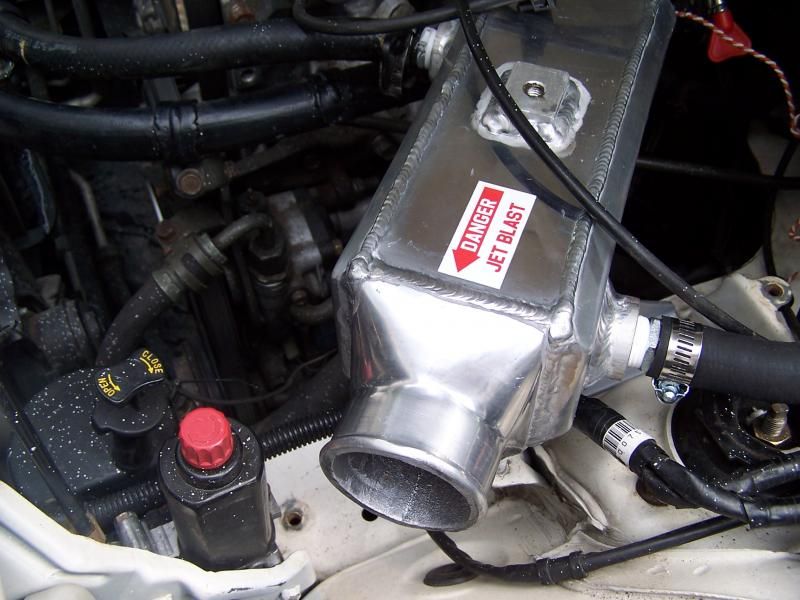 A non related decal was added to further confuse folks.
A non related decal was added to further confuse folks.
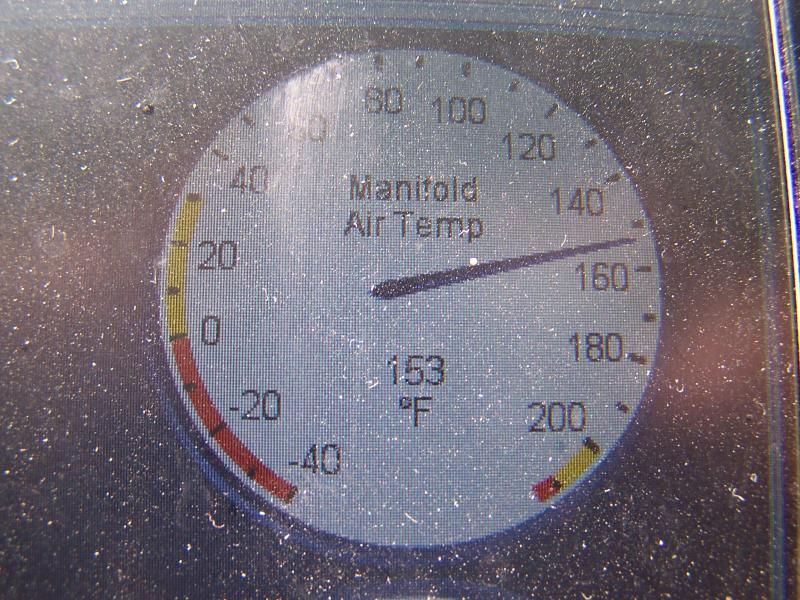 A snapshot of the air intake temp at idle..... getting pretty hot...
A snapshot of the air intake temp at idle..... getting pretty hot...
Stay tuned!
Quick update,
Took the car on a 25 mile mini adventure to evaluate performance loss. At part throttle, there is no detectable difference in performance, however off the line the car seems a bit lazy getting up to speed. For now I'll tolerate the off the line issue. If this idea pans out then a cold air diverter will need to be rigged up.
I datalogged a stable 170F air intake temp throughout the trip. Seems a little low but its consistent.
I let megaSquirt autotune the VE numbers during the trip, I wonder if this was a good idea?
Stay tuned!
fujioko wrote: Quick update, Took the car on a 25 mile mini adventure to evaluate performance loss. At part throttle, there is no detectable difference in performance, however off the line the car seems a bit lazy getting up to speed. For now I'll tolerate the off the line issue. If this idea pans out then a cold air diverter will need to be rigged up. I datalogged a stable 170F air intake temp throughout the trip. Seems a little low but its consistent. I let megaSquirt autotune the VE numbers during the trip, I wonder if this was a good idea? Stay tuned!
Fantastic writeup/data. I wonder when major manufacturers will start doing selectable HAI for cruise MPG's? seems like a no-brainer
When I was four years old, mom told not to stick my fingers in an electrical outlet. .. When she walked away....I stuck my fingers into the outlet. I learned the hard way. My point is, if you don't try something, you will never learn.
so..
In the last episode the intake heat exchanger was installed and the car was driven around a bit. No problems and everything was good.... The reason the car ran well was because I let the Tuner Studio software automatically adjust the VE tables (Volumetric Efficiency) to correct my stupid modification. I'll say this, Tuner Studio can make a turd smell like a rose.
I was excited that the car was sucking hella hot air and running really good. There was some issues with acceleration but it was more or less manageable. Well, bottom line is the gas mileage dropped to 33MPG.
The new plan was to restore the VE tables and try again....
The heat exchanger was temporally bypassed and I let Tuner Studio restore the VE tables. The gas mileage jumped to 41 MPG and the car was making full power with no acceleration issues. The gas mileage is slightly down because I was driving a bit harder, but this is about normal.
So... then I reconnect the heat exchanger and this time I do not modify the VE tables...Long story short, the car is undrivable ... I had to stop the experiment before I could get any real data. The only info I could glean was from the datalog file and it wasn't pretty. The datalog file indicated 37 MPG for a ten mile trip but like I said, the car was undrivable.
The hot air experiment isn't over, their are a few more things I want to try, However..my air/fuel table is already set up to run lean in cruise and the hella hot air took it to the next level. There are a lot of thing about megasquirt I don't fully understand, mostly because I'm using it bassakwards. So far I have learned Megasquirt certainly makes more power and Tuner Studio's auto-tune feature fixes the stupid E36 M3 that I do.
 Disconecting the heat exchanger works better...
Disconecting the heat exchanger works better...![]()
Stay tuned!
fujioko wrote: The heat exchanger was temporally bypassed and I let Tuner Studio restore the VE tables. The gas mileage jumped to 41 MPG and the car was making full power with no acceleration issues. The gas mileage is slightly down because I was driving a bit harder, but this is about normal. So... then I reconnect the heat exchanger and this time I do not modify the VE tables...Long story short, the car is undrivable ... I had to stop the experiment before I could get any real data. The only info I could glean was from the datalog file and it wasn't pretty. The datalog file indicated 37 MPG for a ten mile trip but like I said, the car was undrivable. The hot air experiment isn't over, their are a few more things I want to try, However..my air/fuel table is already set up to run lean in cruise and the hella hot air took it to the next level. There are a lot of thing about megasquirt I don't fully understand, mostly because I'm using it bassakwards. So far I have learned Megasquirt certainly makes more power and Tuner Studio's auto-tune feature fixes the stupid E36 M3 that I do. Stay tuned!
fujioko, I'm not familiar with how Tuner Studio actually does its tuning, so my question might not have any merit or value here...
When you increased the intake air temperature that much, did you (or does Tuner Studio) dial the ignition timing back? Do you have closed loop knock control? I can't see how Tuner Studio would know to dial the ignition back if it didn't have knock input, but I expect it could make the determination if it has some tables telling it to retard timing when the IAT gets super high. Usually one would set up these tables manually, hence my question about if Tuner Studio can do that for you. Do you have an IAT compensation table set up to cover the range of IAT you've experienced with the heat exchanger?
My point is that if you were experiencing pre-det caused by high IAT, then you would experience a big loss of power much as you described. Inversely, if Tuner Studio is smart enough to retard the timing a bunch to avoid pre-det, then you'd still experience a big loss of torque much as you described.
Since you're obviously a smart guy, I'm guessing you knew all that and certainly would have noticed if the engine was experiencing a bunch of knock.
Tuning this will all be so much easier when you get your dyno finished! :D
In reply to Mezzanine:
Lots of good questions there... Megasquirt has an option to retard ignition timing based on IAT, but I have that disabled. As far as I know there are no other variables that would back off the ignition timing (no knock sensor on this car)
Prior to the heat exchanger experiment I rarely would hear a "ping" or spark knock form the little engine. After installing the heat exchanger there was some "pinging" under hard acceleration but I backed off the throttle when that happened.
The car is set up to make full power on heavy acceleration and the fuel is trimmed at part throttle. This arrangement works great and I can get the poky little engine to roar when it has to.
Currently my only tools are the butt dyno and whatever is displayed on the laptop + datalog files. Its imposable and dangerous to actually watch the laptop in real time. The datalog files have less of an impact when sitting in front of a computer hours later. This experiment really needs to be done on the low buck engine dyno to see what is happening in real time. I'm sure more advance megasquirt users could interpret the data without the dyno.
Anyway, I made some changes last night and the experiment continues.
Stay tuned!
Until you’ve got the dyno ready for some tuning, you could activate that AIT compensation table with these ballpark numbers: 0 timing at 80F, 1 degrees retard at 100F, 2 degrees retard at 125F, 3 degrees retard at 140F, 5 degrees retard at 160F, and 7 degrees retard at all temperatures above that, on up to ~280*F or so. This is what I start with when building the AIT compensation table. Since you’re tuning for fuel economy instead of power, you could consider taking all the above retard numbers and advance them one degree.
You’re protecting the engine here more than anything else, so if you're ok with the knock you're experiencing, then you don't really need to bother. I'd try it out.
I know this would be backwards, but... Would you see a higher MPG return with the larger miata engine AND all of your mods done to it?
In other words, would the extra performance potential actually help by reducing the amount of fuel used?
wvumtnbkr wrote: I know this would be backwards, but... Would you see a higher MPG return with the larger miata engine AND all of your mods done to it? In other words, would the extra performance potential actually help by reducing the amount of fuel used?
10 years ago a friend swapped his ZX3 Focus for an SVT Focus and got better mileage in his daily commute as the throttle was no longer an on/off switch but could modulate progress, hence he wasn't driving so hard in traffic.
But I guess that may not apply in this case as part of the mileage is driving style I think
In reply to Mezzanine:
Cool!, thanks for the primer on setting up the IAT compensation table. I'll get that set up tomorrow.
One of the things I discovered today is sometime in the past I granted the EGO 0% authority and forgot about it. I'll set that up again and see if it can keep the AFR out of the danger zone. This might be why everything went to hell on the last experiment.
In reply to wvumtnbkr & Adrian:
That is a good question...
The neutered B3 Miata never gets less than 40 and tends to do a little better on most occasions. If you subtract all the B3 modifications, your left with the RX7 5th gear mod and a megasquirt that's tuned to run lean in cruise and make power in the margins. That's easy enough that someone really ought to try it. At this point, I'm way too far down the rabbit hole to consider the larger engine but it's not a bad idea.
I chose the smaller engine because ultimately I'm shooting for something closer to 50 MPG. I also wanted to use a SOHC engine because they generally get better mileage than DOHC multi-valve engine.. There are exceptions, but as far as older technology goes, SOHC is a good starting point.
Driving style also has a lot to do with the results. I like to jump in and drive, I don't do anything special, but I also don't treat the Miata like a real sports car. It's still a fun car and it can spin both rear tires off the line.
The torquey engine has excellent throttle response all the way up to the 4200 rev limit. The throttle position bounces between 14 to 18% on a typical expressway run at 65 to 70 MPH.
I built the car exactly the way I use it. The operating envelope is fairly small but is more than adequate for street use. The car ain't slow but is not fast.... its just right. Once you get past the mind berkeley under the hood, the car is not so bad.
Stay tuned!
fujioko, I grenaded my open diff in the spring and immediately started searching for a Torsen unit to replace it. My very reputable and knowledgable Miata builder/tuner/friend suggested against it, claiming that the added rotating mass of the Torsen would have a noticeable effect on power, as my car is an automatic. I'm guessing that maybe a swap could help mileage slightly, and could land some $ in your project fund.
I suspect the reason why the hot air experiment left you with less MPG is because power was reduced enough that the car was working much "harder."
Data point for "Megasquirt-tuned larger motor in a Miata:"
I've recorded a best of 35.3mpg in my turbo 95 running Megasquirt. This was a full highway tank in the hilly/mountain areas between Cincinatti and Deal's Gap. Running about 75mph, car has the stock 5spd and 4.10 (Torsen) combo, so it was turning some pretty high RPMs at that point.
Nothing special done for aero. Has a Garage Vary front lip, hardtop, and some awful-looking aftermarket NB miata rear wing thing that can't be helping things.
The car never does worse than 30mpg combined, and typically hangs out in the 32-33mpg range.
I'm confident with a some gearing work and a little more tweaking of the tune, 40mpg wouldn't take any real work to hit.
What i'm saying is that i'd try taking the opposite approach on your B3 as what you're trying now. Tune that thing to make as much power as possible, then focus on a lean low-load cruise. You won't work the motor as hard to accelerate and more power = more efficiency.
just a thought, and I may be talking from the dark side of the couch, but isn't there more inherent pumping loss by throttling a larger motor back than running a smaller motor WFO? Best BSFC is wide open at torque peak from what I understand so the smaller cammed and smaller displacement mill at larger throttle opening and closer to torque peak should get better economy than a larger mill with higher RPM torque peak cam at a smaller throttle opening.
or maybe I misunderstood the junk I've read and should take up drinking heavily again... but I think he's on the right track. I am curious about whether a turbo might help or not. Get some boost at cruise and there's your hot air! Plus side, you recovered it from the exhaust which seems a better place to recover from than the coolant? Well, maybe better after you rub the new off of the WHhheeeeeee sound after every green light and can keep your foot out of it again. :)
You'll need to log in to post.